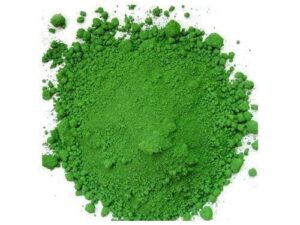Description
Calcium Carbonate: An Unsung Hero in the World of Catalysis
Calcium carbonate (CaCO3), a ubiquitous and readily available compound, is often associated with antacids, building materials, and dietary supplements. However, this humble substance is quietly playing an increasingly important role in the realm of chemical catalysis. While not as glamorous as precious metal catalysts like platinum or palladium, calcium carbonate offers a compelling combination of affordability, availability, and environmental friendliness, making it a viable and sustainable alternative for a variety of chemical reactions.
What is Calcium Carbonate and Why Use it as a Catalyst?
Calcium carbonate, commonly found as limestone, chalk, and marble, possesses several characteristics that make it attractive as a catalyst:
- Abundance and Low Cost: Its widespread availability translates to a significantly lower cost compared to noble metal catalysts, making it appealing for large-scale industrial applications.
- Environmentally Friendly: Calcium carbonate is non-toxic and generally considered environmentally benign. Its use reduces reliance on rare and potentially harmful metals.
- Surface Properties: The surface of calcium carbonate can be tailored through various methods, like doping or surface modification, to enhance its catalytic activity and selectivity.
- Versatile Reactivity: CaCO3 can act as both a base and a support for other catalytically active materials, broadening its applications.
- Thermal Stability: It exhibits good thermal stability, making it suitable for reactions conducted at elevated temperatures.
Applications in Catalysis:
Calcium carbonate finds application in a diverse range of catalytic processes, including:
- Transesterification Reactions: It’s used as a solid base catalyst in transesterification reactions, crucial for biodiesel production. Its ability to catalyze the reaction between triglycerides and alcohols makes it a sustainable alternative to traditional alkaline catalysts.
- CO2 Capture and Conversion: Calcium carbonate is gaining attention for its role in CO2 capture and conversion. Its ability to react with CO2 to form calcium bicarbonate can be utilized in sequestration technologies. Furthermore, modified CaCO3 catalysts can promote the conversion of CO2 into valuable chemicals.
- Decomposition Reactions: It can catalyze the decomposition of organic pollutants, such as dyes and pesticides, in wastewater. Its effectiveness can often be enhanced through doping with other metal oxides or by supporting other catalytic materials.
- Oxidative Coupling of Methane (OCM): While still an area of active research, doped calcium carbonate catalysts show promise in the oxidative coupling of methane to produce higher hydrocarbons, a challenging but crucial reaction for utilizing natural gas resources.
- Support for Metal Catalysts: Calcium carbonate serves as an excellent support material for dispersing and stabilizing metal nanoparticles. The high surface area and porous structure of some forms of CaCO3 enhance the activity and stability of the supported metal catalyst.
Challenges and Future Directions:
Despite its potential, calcium carbonate catalysts face certain challenges:
- Lower Activity Compared to Precious Metals: Typically, CaCO3 catalysts exhibit lower activity compared to traditional precious metal catalysts.
- Surface Area Limitations: Some forms of calcium carbonate have limited surface area, reducing the number of active sites available for catalysis.
- Selectivity Improvement: Enhancing the selectivity of CaCO3 catalysts for specific products is essential for wider adoption.
Addressing these challenges is the focus of ongoing research. Scientists are exploring strategies like:
- Surface Modification: Coating or doping CaCO3 with other metal oxides or active materials to improve its catalytic activity and selectivity.
- Nanostructuring: Synthesizing nano-sized CaCO3 particles with high surface area and controlled morphology to enhance its performance.
- Developing Composite Materials: Combining CaCO3 with other materials to create synergistic effects and improve its overall catalytic properties.
Conclusion:
Calcium carbonate, often overlooked, presents a compelling option for sustainable and cost-effective catalysis. While challenges remain, ongoing research is continually expanding its applicability and performance. As the demand for environmentally friendly and economically viable catalytic technologies increases, calcium carbonate is poised to play an increasingly significant role in shaping the future of chemical processes. Its abundance, low cost, and potential for modification make it a valuable tool for researchers and industries seeking to develop sustainable solutions for a wide range of chemical reactions. The future of catalysis may very well be built on a foundation of solid calcium carbonate.














Reviews
There are no reviews yet.